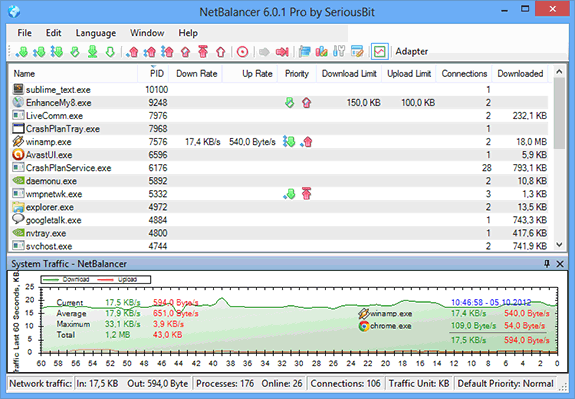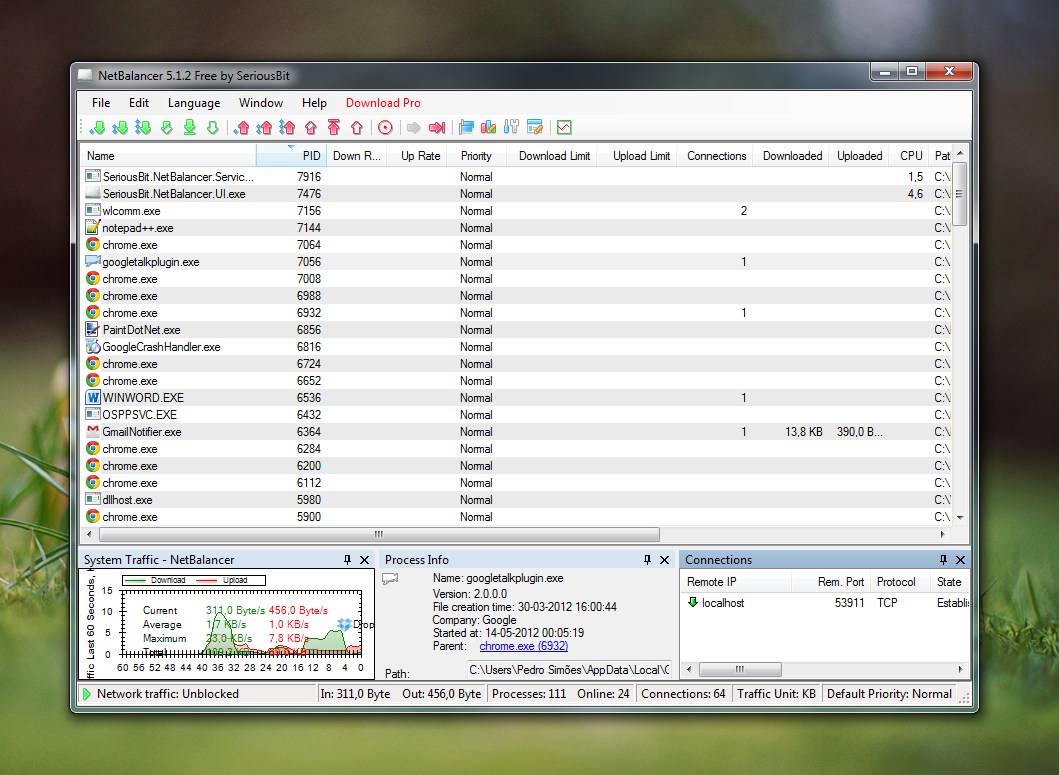

An example below is of how EA's Origin downloads worked at one point: The one variation that is close to useful on this end is if an application only communicates over a specific channel or type of traffic that easily can be identified by the router. The original question is specifically asking about a process - which a router has no way reliably to identify. Though using a smart/highly-configurable router is usually the better approach to wholistic network management, the disconnect between that and the original question is not explained in other answers. Using a Router (with an explanation of why this isn't a good approach to this use case). This can still be useful - but not for this use case. When NetLimiter's trial ends, until you buy a license, it becomes a monitoring-only tool - and no longer supports throttling. NetLimiter is the tried-and-tested go-to application for many SysAdmins. It has a free trial period - but starts at ~$20 for the Lite version or ~$30 for the Pro version.

The trial/free version allows you to monitor connections - but does not allow throttling. NetBalancer is available for purchase on their web page for about $50. It works really well - and is easy to configure. Per one of the other top answers, for a while I tested out NetBalancer. There are good reasons to look at the "Internet facing router" approach for managing a network as a whole - however as the original question was specific and the user may very well be the only computer on the network, that is a secondary concern. You can also create these policies in Powershell by running: New-NetQosPolicy -Name "FTP" -AppPathNameMatchCondition "ftp.exe" -ThrottleRateActionBitsPerSecond 1MBĪlthough this might require administrator rights, and there seems to be a bug where policies created like this will not appear in the GUI. Specific websites (only for applications using HTTP protocols)Īnd your policies can then be filtered by:.The wizard allows you to create a policy to throttle bandwidth for either: Then follow the wizard to create a new throttling policy.Either right clicking "Policy-based QoS" or going to "Action" > Create new policy.Here you can see the current policies and create new ones by: Computer/User Configuration (pick one or the other) > Windows Settings > Policy-based QoS.You can use Windows Group Policy to throttle the bandwidth of any process.


 0 kommentar(er)
0 kommentar(er)
